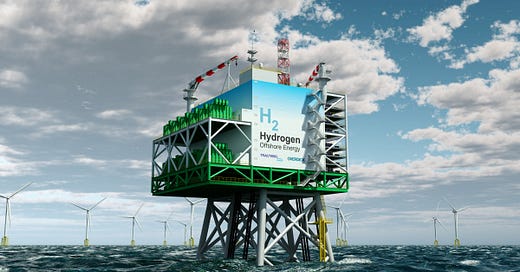A Chinese science research team achieved breakthrough on seawater electrolysis technology and got China’s top 10 national science and technology award 2022.
The problems of side reactions and corrosion caused by complex components in seawater have always been difficult to solve by direct electrolytic hydrogen production in seawater. By combining molecular diffusion, interfacial phase equilibrium and other physical and mechanical processes with electrochemical reactions, team of professor Xie Heping from Shenzhen University/Sichuan University pioneered a new principle and technology for direct electrolytic hydrogen production of seawater, established a theoretical method for direct electrolytic hydrogen production of seawater with gas-liquid interface phase transition. The electrochemical reaction doesn’t need extra energy consumption and the dynamic self-regulation and stabilization of seawater direct electrolytic hydrogen production can be realized in collaboration with seawater migration. The 386 L/hr H2 prototype electrolyzer stably produced hydrogen in real seawater for more than 3200 hours, with Faraday efficiency of nearly 100% and electrolytic energy consumption of about 5.0kwh/Nm3.
Seawater electrolysis has become a hot topic recently due to the increasing interest in hydrogen as a clean and renewable energy source. It’s an attractive option for hydrogen production because it uses seawater as a feedstock, which is abundant and readily available. In addition, the process can be powered by renewable energy sources such as offshore wind power, making it a clean and sustainable option for hydrogen production.
While seawater electrolysis has the potential to be a clean and sustainable source of hydrogen fuel, there are also several technical and economic challenges that need to be addressed to make the process more viable and cost-effective.





Wouah.!!